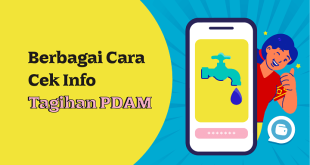Introduction to ISO 9001 Internal Audit
ISO 9001 Internal Audit is a systematic and independent examination of an organization’s quality management system to assess its compliance with ISO 9001 standards. It involves evaluating processes, procedures, and documentation to ensure they align with the requirements of ISO 9001.
The Importance of ISO 9001 Internal Audit
The ISO Internal Audit serves multiple purposes in an organization. Firstly, it helps identify areas where the quality management system is functioning effectively and areas that require improvement. By conducting regular internal audits, organizations can proactively address issues, minimize risks, and optimize their processes to enhance overall efficiency.
Furthermore, ISO Internal Audit plays a crucial role in maintaining compliance with ISO 9001 standards. Compliance is essential not only for meeting regulatory requirements but also for building trust with customers and stakeholders. By ensuring compliance, organizations demonstrate their commitment to delivering high-quality products and services.
Conducting an Effective ISO 9001 Internal Audit
To conduct an effective ISO 9001 Internal Audit, organizations should follow a well-defined process. It starts with planning the audit, including defining audit objectives, selecting auditors, and determining the scope of the audit. The next step involves gathering information, reviewing documentation, and conducting on-site inspections. During the audit, auditors assess the organization’s adherence to ISO 9001 standards, identify non-conformities, and document their findings. Finally, the audit concludes with a report that outlines the audit results, including recommendations for improvement.
Benefits of ISO 9001 Internal Audit
ISO Internal Audit offers several benefits to organizations. Firstly, it enables organizations to identify and address inefficiencies within their processes. By conducting regular audits, businesses can pinpoint areas that require improvement and implement corrective actions, leading to enhanced operational efficiency.
Secondly, ISO Internal Audit plays a vital role in maintaining compliance with ISO 9001 standards. Compliance is crucial for organizations seeking to meet regulatory requirements and build trust with customers and stakeholders. Through internal audits, organizations can ensure that their quality management system aligns with ISO 9001 requirements, reducing the risk of non-compliance.
Additionally, ISO Internal Audit fosters a culture of continuous improvement within organizations. By consistently assessing their processes and procedures, organizations can identify opportunities for enhancement and implement proactive measures. This helps in driving innovation, optimizing performance, and achieving customer satisfaction.
Furthermore, ISO Internal Audit provides organizations with valuable insights into potential risks and areas of vulnerability. By identifying these risks, organizations can implement preventive measures to minimize the occurrence of errors and non-conformities, resulting in improved quality and customer trust.
Overall, ISO Internal Audit serves as a powerful tool for organizations to enhance efficiency, ensure compliance, drive continuous improvement, and mitigate risks, ultimately leading to increased competitiveness and success in the market.
Implementing Recommendations and Improvements
Following an ISO Internal Audit, organizations should prioritize the implementation of recommendations and improvements. This involves assigning responsibilities, establishing timelines, and monitoring progress. By acting upon the findings of the audit, organizations can ensure that the quality management system evolves and adapts to changing requirements.
Challenges and Solutions in ISO 9001 Internal Audit
While conducting ISO Internal Audit, organizations may face certain challenges. These can include a lack of resources, resistance to change, and difficulty in capturing objective evidence. However, these challenges can be overcome through effective planning, stakeholder engagement, and leveraging technology to automate auditing processes.
Integrating ISO 9001 Internal Audit with Overall Business Strategy
To maximize the benefits of ISO Internal Audit, organizations should integrate it with their overall business strategy. By aligning internal audits with strategic objectives, organizations can ensure that the quality management system supports their broader goals, such as customer satisfaction, risk management, and innovation.
Ensuring Compliance with ISO 9001 Standards
Compliance with ISO 9001 standards is essential for organizations seeking to uphold their reputation and gain a competitive edge. ISO Internal Audit helps ensure compliance by verifying that the organization’s quality management system adheres to the requirements of ISO 9001. Through regular internal audits, organizations can identify non-conformities, take corrective actions, and maintain their ISO 9001 certification.
ISO 9001 Internal Audit Best Practices
When conducting an ISO 9001 Internal Audit, organizations can optimize the process and achieve meaningful outcomes by following best practices. These practices ensure that the audit is thorough, efficient, and effective in evaluating the organization’s adherence to ISO 9001 standards.
One of the key best practices is to establish clear audit objectives. This involves defining the scope of the audit, identifying the specific areas and processes to be assessed, and setting measurable goals. Clear objectives provide auditors with a focused direction and enable them to prioritize their efforts.
Selecting competent auditors is another crucial best practice. Auditors should possess a deep understanding of ISO 9001 standards, auditing techniques, and industry-specific requirements. Investing in training and education for auditors helps enhance their skills and knowledge, ensuring they can conduct the audit with proficiency.
Maintaining thorough and accurate audit records is essential for documentation and future reference. Proper documentation enables traceability, facilitates tracking of audit findings, and supports corrective action implementation.
Lastly, effective communication of audit results to stakeholders is vital. By sharing the audit findings, recommendations, and opportunities for improvement, organizations can engage stakeholders and foster a collaborative approach to addressing quality management issues.
By incorporating these best practices into their ISO Internal Audit process, organizations can enhance the value and impact of their audits, driving continuous improvement and maintaining compliance with ISO 9001 standards.
Leveraging Technology for Streamlined Internal Auditing
In the digital age, organizations can leverage technology to streamline their internal auditing processes. Auditing software and tools can automate data collection, analysis, and reporting, reducing manual efforts and improving accuracy. By embracing technology, organizations can enhance the efficiency and effectiveness of their ISO 9001 Internal Audit.
Training and Education for ISO 9001 Internal Auditors
Training and education play a crucial role in developing competent ISO 9001 Internal Auditors. Organizations should invest in training programs that enhance auditors’ knowledge of ISO 9001 standards, auditing techniques, and industry-specific requirements. Well-trained auditors can contribute significantly to the success of internal audits and continuous improvement efforts.
Industry-Specific Considerations for ISO 9001 Internal Audit
Different industries have unique requirements and regulations. When conducting ISO 9001 Internal Audit, organizations must consider industry-specific factors. This includes understanding specific quality standards, compliance requirements, and customer expectations. By tailoring internal audits to the industry context, organizations can maximize the effectiveness of their quality management system.
Continuous Improvement through ISO 9001 Internal Audit
ISO Internal Audit is not a one-time activity but rather an ongoing process of continuous improvement. Organizations should embrace a culture of learning, innovation, and adaptation. By consistently evaluating their quality management system through internal audits, organizations can identify opportunities for improvement, address emerging challenges, and stay ahead in the competitive landscape.
Conclusion
ISO 9001 Internal Audit is a powerful tool for organizations to maximize efficiency and ensure compliance with quality management standards. By conducting regular internal audits, organizations can identify areas for improvement, streamline processes, and enhance overall performance. With a strategic approach to ISO Internal Audit, organizations can achieve operational excellence, customer satisfaction, and sustained success.
FAQs
1. What is ISO Internal Audit?
ISO Internal Audit is a systematic examination of an organization’s quality management system to assess its compliance with ISO standards.
2. Why is ISO Internal Audit important?
ISO Internal Audit helps organizations enhance efficiency, identify areas for improvement, and maintain compliance with ISOstandards.
3. How can organizations conduct effective ISO Internal Audits?
Organizations can conduct effective ISO Internal Audits by following a well-defined process, gathering information, assessing compliance, and documenting findings.
4. What are the benefits of ISO Internal Audit?
ISO Internal Audit improves operational efficiency, detects potential issues, prevents non-compliance, and fosters a culture of continuous improvement.
5. How can technology enhance ISO Internal Audit?
Technology can streamline internal auditing processes by automating data collection, analysis, and reporting, leading to increased efficiency and accuracy.
 Posting Point
Posting Point

